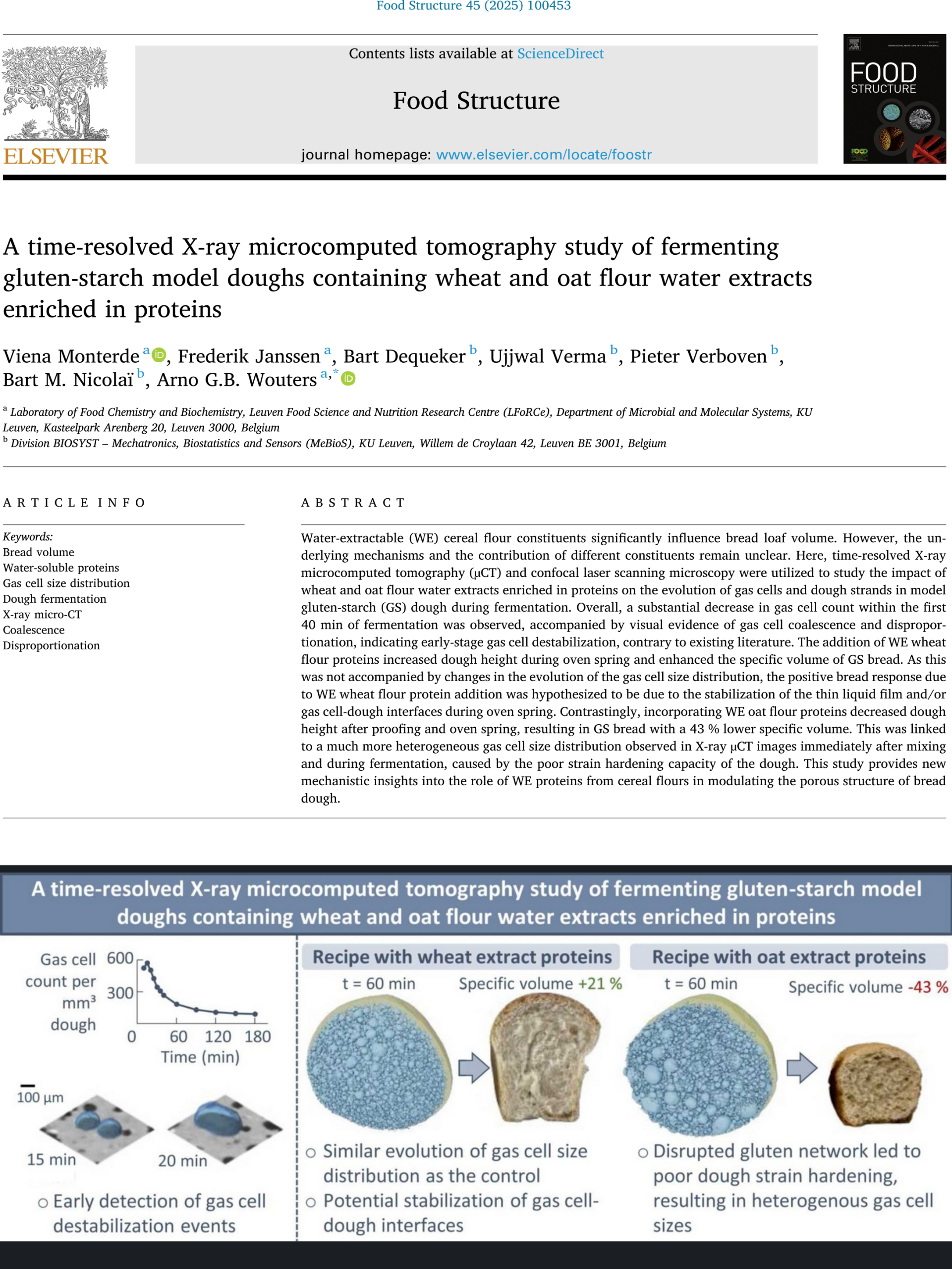Water-extractable (WE) cereal flour constituents significantly influence bread loaf volume. However, the underlying mechanisms and the contribution of different constituents remain unclear. Here, time-resolved X-ray microcomputed tomography ( µ CT) and confocal laser scanning microscopy were utilized to study the impact of wheat and oat flour water extracts enriched in proteins on the evolution of gas cells and dough strands in model gluten-starch (GS) dough during fermentation. Overall, a substantial decrease in gas cell count within the first 40 min of fermentation was observed, accompanied by visual evidence of gas cell coalescence and disproportionation, indicating early-stage gas cell destabilization, contrary to existing literature. The addition of WE wheat flour proteins increased dough height during oven spring and enhanced the specific volume of GS bread. As this was not accompanied by changes in the evolution of the gas cell size distribution, the positive bread response due to WE wheat flour protein addition was hypothesized to be due to the stabilization of the thin liquid film and/or
gas cell-dough interfaces during oven spring. Contrastingly, incorporating WE oat flour proteins decreased dough height after proofing and oven spring, resultingin GS bread with a 43 % lower specific volume. This was linked to a much more heterogeneous gas cell size distribution observed in X-ray µ CT images immediately after mixing and during fermentation, caused by the poor strain hardening capacity of the dough. This study provides new mechanistic insights into the role of WE proteins from cereal flours in modulating the porous structure of bread dough.

